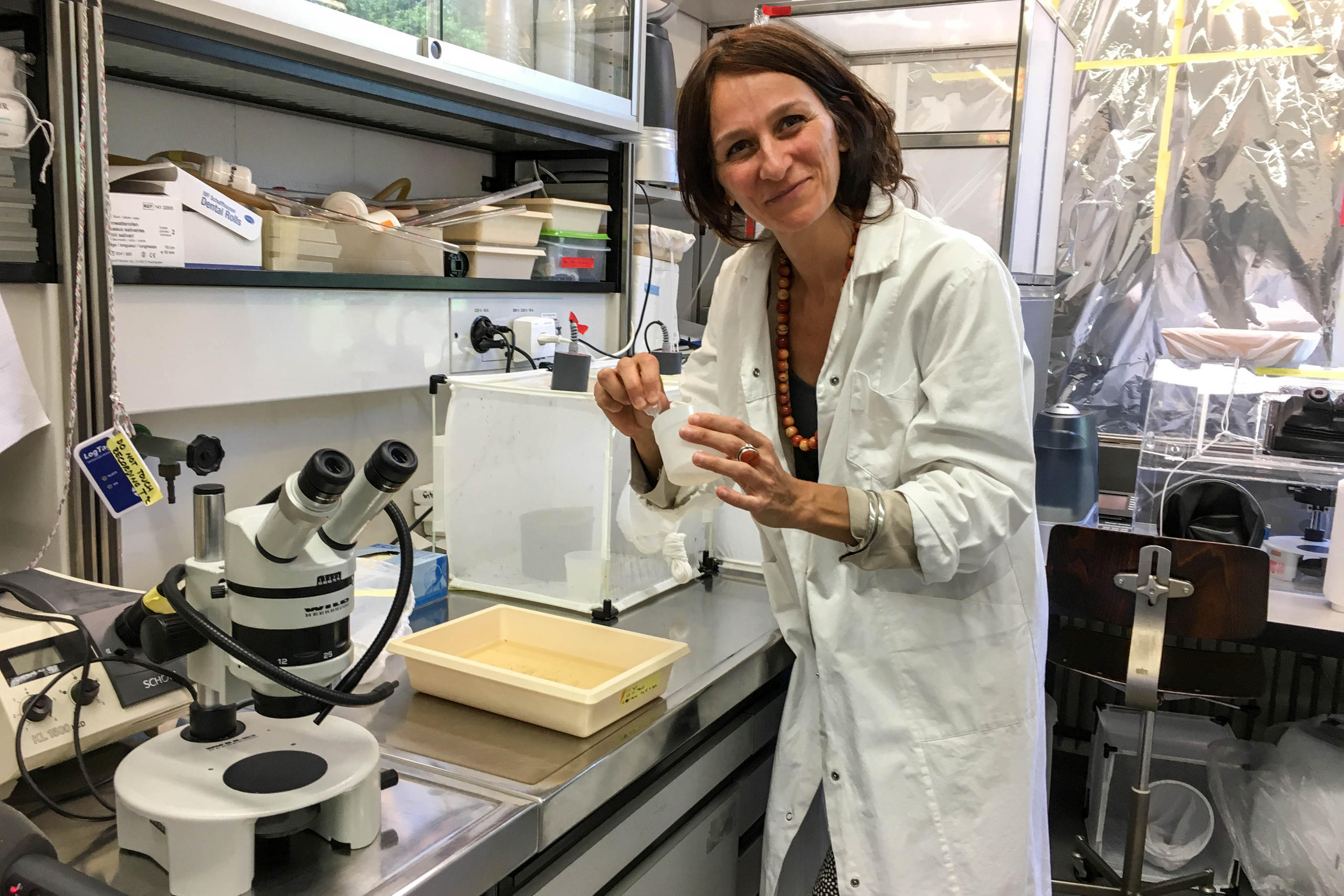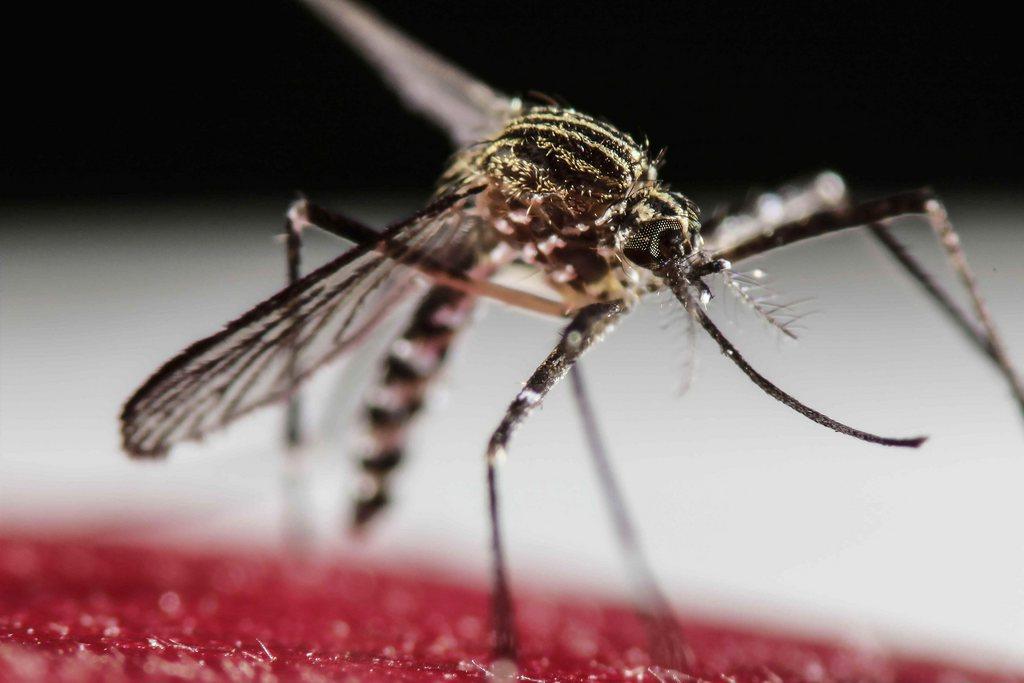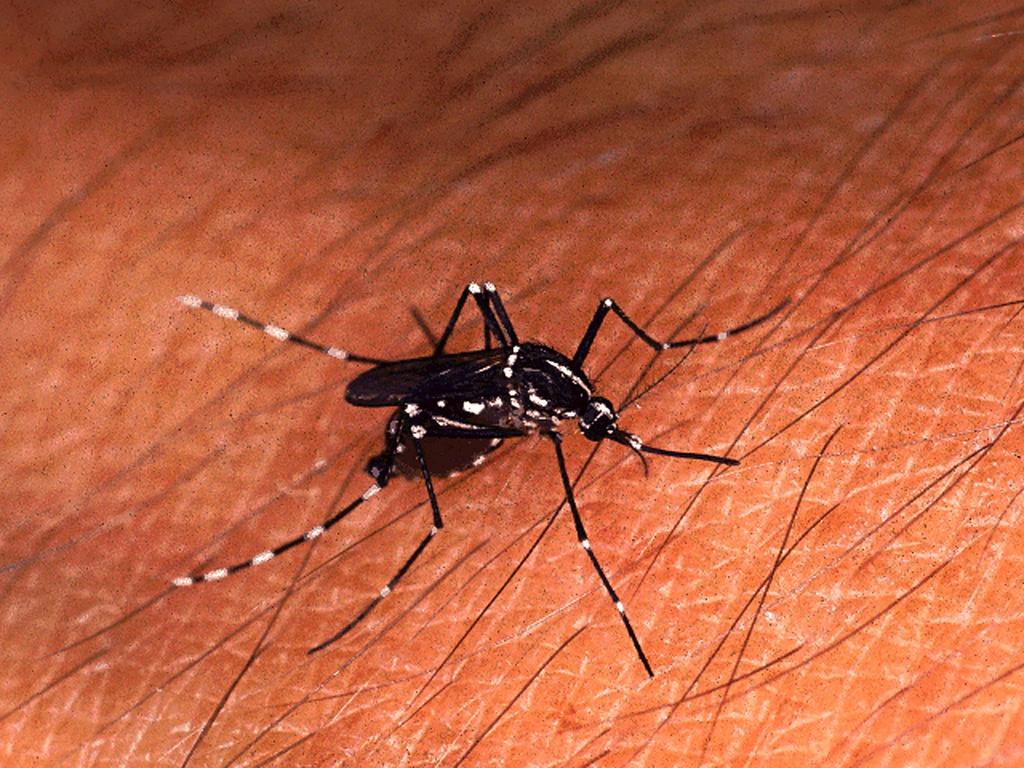Could Zika be spread in Switzerland?

An escaped research subject buzzes through the air in search of its next victim. This mosquito is in fact healthy, but soon, scientists in Zurich will be infecting exotic mosquitoes found in Switzerland to see if they can transmit the Zika virus to humans.
By now you’ve probably heard of the Zika virus, which has been linked to foetal defects – notably, microcephaly or an abnormally small head – when pregnant women are affected.
As a mosquito-borne disease, Zika has primarily made headlines for its impact in its native tropical regionsExternal link of South America, southeast Asia, and western and central Africa. But research on Zika is also needed in Switzerland, where 41 cases were recorded in 2016. Environmental changes coupled with the modern surge in international travel means that today, pathogens can easily enter Europe from abroad.

“Zika was discovered in Uganda [in 1947] along with many other viruses, which had never encountered humans because they were in a completely isolated environment. But when you start to cut down the forest and put together human and animal habitats, then mosquitoes can skip from one host to another,” explains Eva Veronesi, a postdoctoral researcher at the University of Zurich (UZH).
The Italian entomologist is leading a team of researchers at the UZH Institute for Parasitology in a quest to determine which exotic mosquito species found in Switzerland can further spread Zika. Her work on this topic – which is called vector competence – is part of a 53-partner, EU- funded international research project called ZikAllianceExternal link.
A question of competence
Currently, Zika is known to be transmitted between humans via sexual contact, and from a pregnant mother to her unborn child. But the most common way is through the bite of the blood-sucking female Egyptian tiger mosquito – also known as the yellow fever mosquito – Aedes aegypti.
That’s not much of a problem for Switzerland, since this species can’t survive the central European climate. However, two other exotic mosquito species can: Aedes albopictus (Asian tiger mosquito), which comes from southeast Asia and was first spotted in the southern Swiss canton of Ticino in 2003; and Aedes japonicus (Asian bush mosquito), which is native to Japan and Korea and was first observed in Switzerland in 2008.
Recent researchExternal link has confirmed that Ae. albopictus is physically capable of transmitting the Zika virus, and it’s currently classified as a “potential” vector of the disease among humans. But the status of the Asian bush mosquito in this regard remains unknown – and that’s what Veronesi and her team aim to find out.
“We have already shown that Ae. japonicus can transmit other pathogens like West Nile virus, and because that’s in the same family as the Zika virus, there is a good chance that Zika can be transmitted by Ae. japonicus, too,” Veronesi says.
The researchers are currently collecting eggs from different Ae. japonicus populations around Switzerland. They plan to raise the eggs to adulthood, and then infect them with different strains of Zika from Africa, South America and Asia. Once infected, the mosquitoes will be tested to see if they can spread the virus.
The researchers will also test the mosquitos’ potential for virus transmission under different temperature conditions, including those reflecting average Swiss temperatures. Another factor that will determine whether the mosquitoes are ‘competent’ Zika vectors is whether the virus can survive inside their bodies long enough to reach their salivary glands. This is because every time a female mosquito bites, she first injects a little saliva into the wound to keep her victim’s blood from clotting.
Egg hunt
Altogether, there are about 32 species of mosquito in Switzerland, including the most common native species, Culex pipiens. But Veronesi and her team are focusing on the exotic ones, since there is already evidence that they can spread similar diseases like West Nile virus.
Veronesi explains that she and her team have already gathered mosquito eggs in Zurich, and have plans to collect more from all across Switzerland. To make sure they only harvest Asian bush mosquito eggs, they use traps that replicate the insects’ natural breeding sites. These tend to be moist, dark surfaces – in contrast to other mosquito species, which lay eggs directly onto standing water.

“We fill small, black plastic containers with tap water, and then put a little strip of special paper inside, which absorbs the water. The mosquito then lays its eggs on the paper,” Veronesi explains. “In one week in Zurich, we collected more than 10,000 eggs with 30 traps.”
Preparing for the worst
Since the 2015 Zika outbreak in Brazil, there have been sporadic cases reported in Switzerland. In 2016, Ticino’s city of Locarno instated hefty fines for residents who failed to take precautions aimed at minimising Asian tiger mosquito populations, such as closing garbage receptacles tightly and eliminating sources of standing water. But so far, the incidence rate in Switzerland has thankfully not reached epidemic proportions.
So, what happens if the UZH researchers discover that the Asian bush mosquito is capable of transmitting Zika?
“We would have to try and reduce populations, and prepare for a possible epidemic in Europe. There are sophisticated methods that can be implemented at a national level,” Veronesi says, citing bacterial and chemical insecticides as well as the control of mosquito reproduction through the release of sterilised individuals.
She adds that first results are expected by the end of this year or early next year.
“A positive result should be taken into serious consideration, because of course we all travel, and there are no borders for insects or pathogens.”
- The Zika virus was first observed in 1947, with the first documented human case in 1952.
- The virus is named after the Zika Forest in Uganda.
- The first large human outbreak wasn’t documented until 2007, in Micronesia.
- The World Health Organization declared Zika an international health emergency on February 1, 2016.
- The Zika virus provided the first documented instance of sexual transmission of a disease usually spread by insects.
- Because the symptoms of Zika infection – fever, rash, headache, joint and muscle pain, and red eyes – are often mild and very similar to those of many other diseases, it can be difficult to estimate the true number of cases.
- There is currently no vaccine or cure for Zika.
- Zika is very rarely fatal.
- In addition to microcephaly, the “congenital Zika virus syndromeExternal link” observed in foetuses exposed to the virus during pregnancy include seizures and problems with hearing, vision and swallowing, as well as miscarriage or stillbirth.
The ZikAllianceExternal link project is supported by the European Union Horizon 2020 Research and Innovation Programme under the ZikAlliance Grant Agreement 734548 to better understand the clinical and fundamental aspects of infections by Zika virus. A three-year project involving €11.9 million (CHF12.9 million) in funding and 53 partners across Europe, the research will focus especially on the impacts of Zika infection during pregnancy, and the virus’s natural history.
The Infravec2External link project has received funding from the European Union’s Horizon 2020 research and innovation programme under grant agreement No 731060. Funded for four years with €10 million (CHF10.9 million) and with 24 partners, the initiative provides infrastructure and resources for underfunded research groups to study insect vectors of human and animal disease, including mosquitoes, biting midges, ticks and sandflies.

In compliance with the JTI standards
More: SWI swissinfo.ch certified by the Journalism Trust Initiative















You can find an overview of ongoing debates with our journalists here . Please join us!
If you want to start a conversation about a topic raised in this article or want to report factual errors, email us at english@swissinfo.ch.